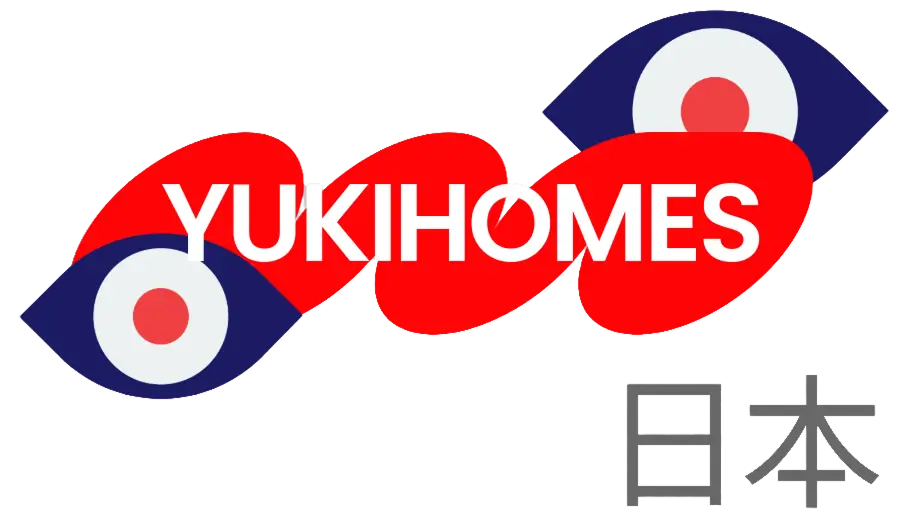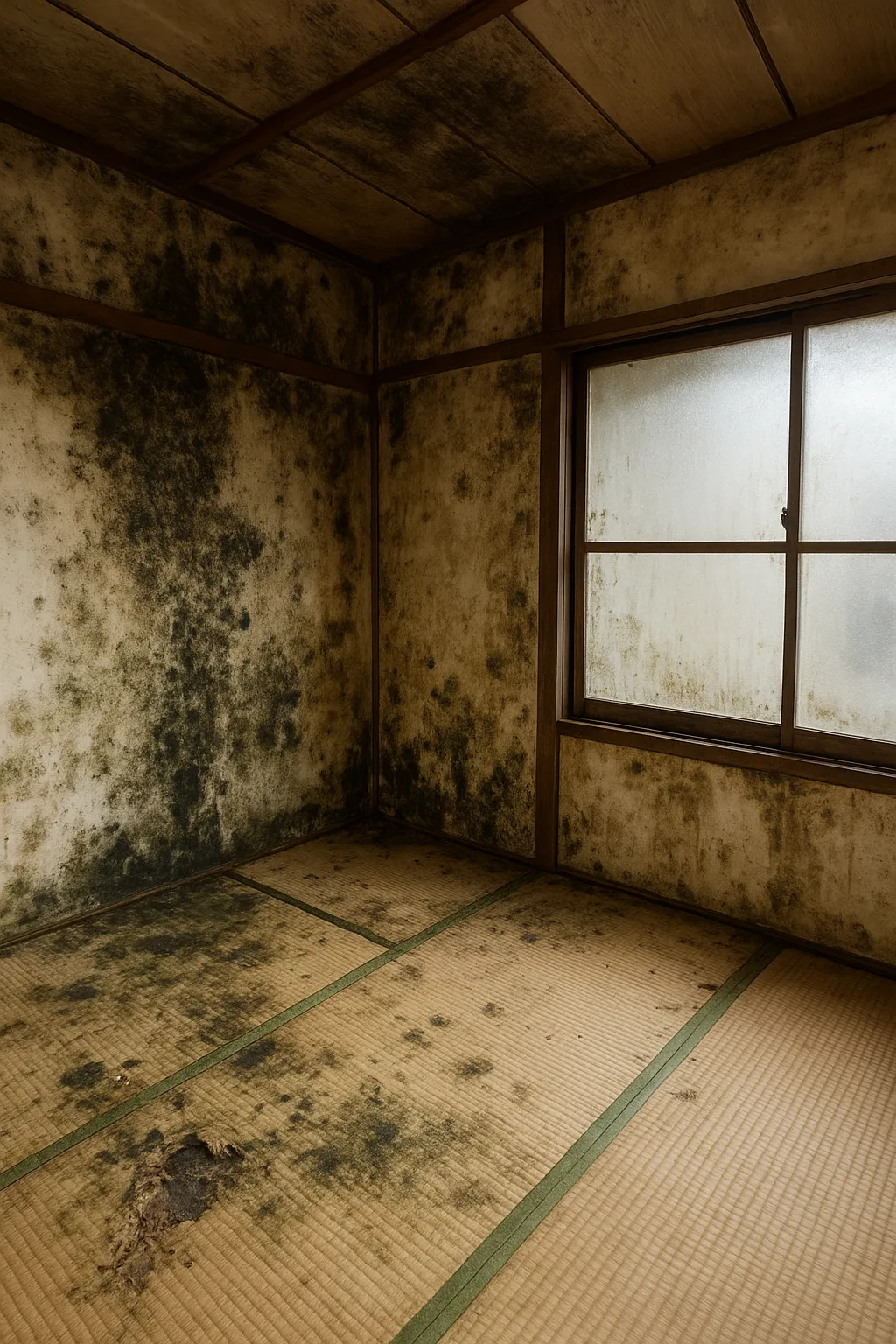Let's talk about something every akiya buyer discovers but nobody warns you about: Japanese houses get moldy. Not "a little mildew in the shower" moldy. We're talking full-blown mold colonies that can take over closets, crawl behind tatami mats, and turn your dream Japanese home into a humid nightmare.
This isn't a design flaw or a sign you bought a bad property. It's just the reality of Japan's climate meeting traditional building methods. The good news? Once you understand why it happens, you can actually prevent it.
Why Japan Is Mold Paradise
The humidity is relentless. Central and southern Japan hit 70-90% humidity during summer, and even "dry" Hokkaido gets major temperature swings that create condensation everywhere. Your house isn't just dealing with occasional dampness—it's living in a humid cloud for months at a time.
Traditional materials love moisture. Those beautiful tatami mats, shoji screens, and wooden beams that give Japanese homes their character? They're basically mold magnets. Wood, paper, and natural fibers don't just get damp—they hold dampness and feed it directly to mold spores.
Modern homes aren't much better. Even newer Japanese houses prioritize energy efficiency over ventilation. They're sealed tight against winter cold, which means humid air gets trapped inside with nowhere to go.
Heating systems make it worse. Unlike Western homes with central air systems that circulate and dry the entire house, Japanese homes rely on individual AC units and space heaters. You might have one room perfectly climate-controlled while the rest of the house becomes a mold incubator.
The Compact Living Problem
Japanese homes are smaller, which sounds like it should be easier to manage. Actually, it makes mold problems worse. Furniture gets pushed against walls, belongings get stacked in tight spaces, and air circulation becomes nearly impossible.
Those beautiful built-in closets and under-floor storage areas? They're mold factories. Add seasonal living patterns—futons stored for months, winter clothes packed away, guest rooms that never get opened—and you've created perfect conditions for mold to establish colonies while you're not looking.
The Prevention Strategies That Actually Work
Fighting mold in Japan isn't about occasional cleaning. It's about creating systems that work with the climate instead of against it.
Airflow Is Everything
Open windows daily, even in winter. Ten to fifteen minutes of cross-ventilation (windows on opposite sides of the house) exchanges stagnant humid air for fresh air. Japanese people do this religiously, even when it's inconvenient.
Leave closet doors cracked open. Stagnant air is mold's best friend. Some homeowners install small vents in closet doors specifically for air circulation.
Elevate everything. Futons on the floor, boxes against walls, furniture with no gap for airflow—all guaranteed mold problems. Raise mattresses on slats, pull furniture a few inches from walls, elevate storage boxes off floors.
Humidity Control Technology
Dehumidifiers aren't optional. They're essential equipment that runs daily during rainy season and summer. Think of them like air conditioning—not a luxury, but a necessity for livable conditions.
Use AC "dry mode" instead of just cooling. Most Japanese AC units have a dehumidify setting that pulls moisture out of the air while cooling. It's more effective for mold prevention than straight cooling mode.
Moisture absorbers everywhere. Those plastic tubs with gel crystals (joshitsuzai) go in closets, under sinks, behind furniture. They're cheap, available everywhere, and actually work.
Bamboo charcoal (binchōtan) for passive moisture control. Natural, reusable, and effective for small spaces and storage areas.
Surface and Material Management
Tatami mats need regular attention. Air them outside twice a year if possible, vacuum regularly, and consider rotating them seasonally. Some people use dehumidifiers specifically in tatami rooms.
Alcohol spray for early intervention. Diluted ethanol (available at any Japanese supermarket) kills mold spores on wood and paper surfaces without staining. Use it regularly in problem areas.
Don't dry laundry indoors without a dehumidifier. This is a huge mistake that turns your entire house into a humidifier. Either use outdoor drying or run dehumidifiers while clothes dry inside.
Smart Home Habits
Sun your bedding regularly. The Japanese practice of hanging futons and pillows outside to "air out" isn't just traditional—it kills mold and mites that love humid bedding.
Wipe down bathrooms after every use. Exhaust fans during showers, wipe tiles and mirrors, keep surfaces dry. Bathrooms are ground zero for household mold.
Monitor humidity levels. Install humidity meters in key rooms and aim for 40-60%. Above 60% and you're in mold territory.
When Prevention Isn't Enough
Sometimes you inherit a mold problem with an older property, or prevention strategies aren't sufficient for your specific situation. Here's when to escalate:
Early stage: Spot treatment with alcohol spray works for surface mold on hard surfaces.
Established mold: Professional cleaning services in Japan specialize in mold removal and know how to treat traditional materials without damage.
Severe infestations: Might require replacing tatami, refinishing wood surfaces, or installing additional ventilation systems.
The Philosophy: Prevention, Not Fighting
Japanese homeowners understand something Western buyers often miss: once mold gets into tatami, wood, or paper materials, it's extremely difficult to completely remove. That's why the focus is on preventing growth rather than fighting existing problems.
This means running dehumidifiers religiously, maintaining airflow obsessively, and treating humidity control as a daily habit rather than a seasonal concern.
Why We Focus on Post-1981 Properties
This is one reason we typically recommend properties built after 1981—not just for earthquake safety, but because newer building techniques and materials handle humidity better than traditional construction. Modern vapor barriers, improved ventilation systems, and updated materials make mold prevention much more manageable.
That doesn't mean older properties can't work, but it does mean understanding what you're getting into and budgeting for humidity control systems from day one.
The Bottom Line
Mold in Japanese houses isn't a disaster—it's a manageable reality. With the right systems, habits, and equipment, you can maintain comfortable, mold-free living conditions even in Japan's humid climate.
The key is understanding that humidity control is as essential as heating or cooling in Japanese homes. Build it into your routine, invest in proper equipment, and treat it as part of normal home maintenance rather than an emergency response.
Your akiya can be beautiful and comfortable—you just need to work with Japan's climate instead of against it.
Buying an older Japanese property? We help clients understand humidity management, renovation requirements, and building code differences so there are no surprises after purchase. Because your dream Japanese home shouldn't become a mold nightmare.
Take the Next Step
Join our community for exclusive insights and resources on Japanese real estate investments.

Our team
Meet the founders.

Derek has been working in the Airbnb space for the past 10+ years and recently purchased a home in Japan. He is excited to bring this investment opportunity to others in the States & abroad.

Nick has a passion for adventure and has always dreamed of owning a property in Japan. His dreams finally came true when Derek brought him in on a deal of a lifetime in Hokkaido, Japan - one of Nick's favorite places on Earth.


